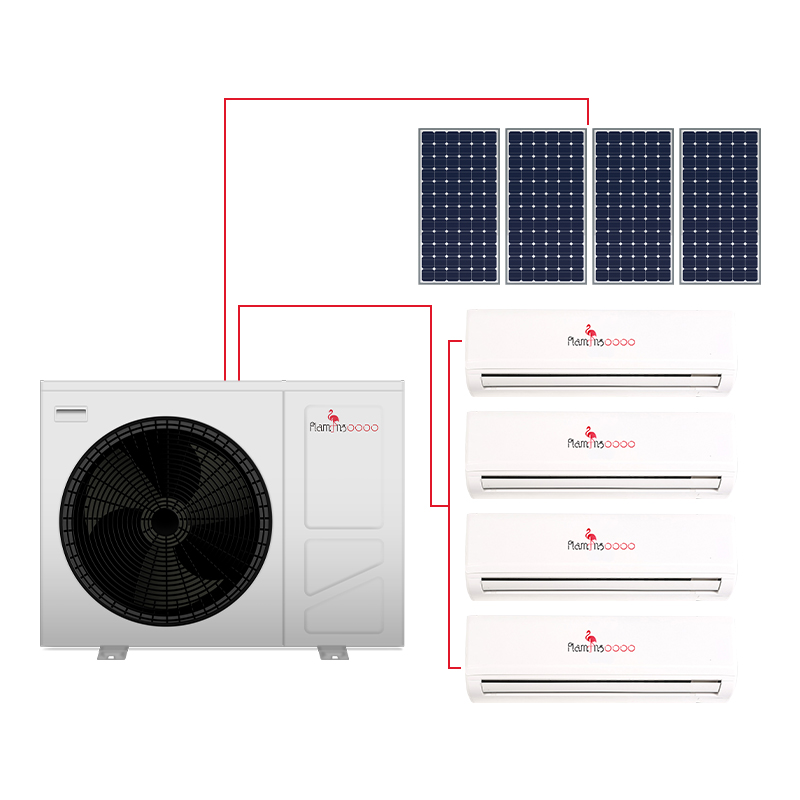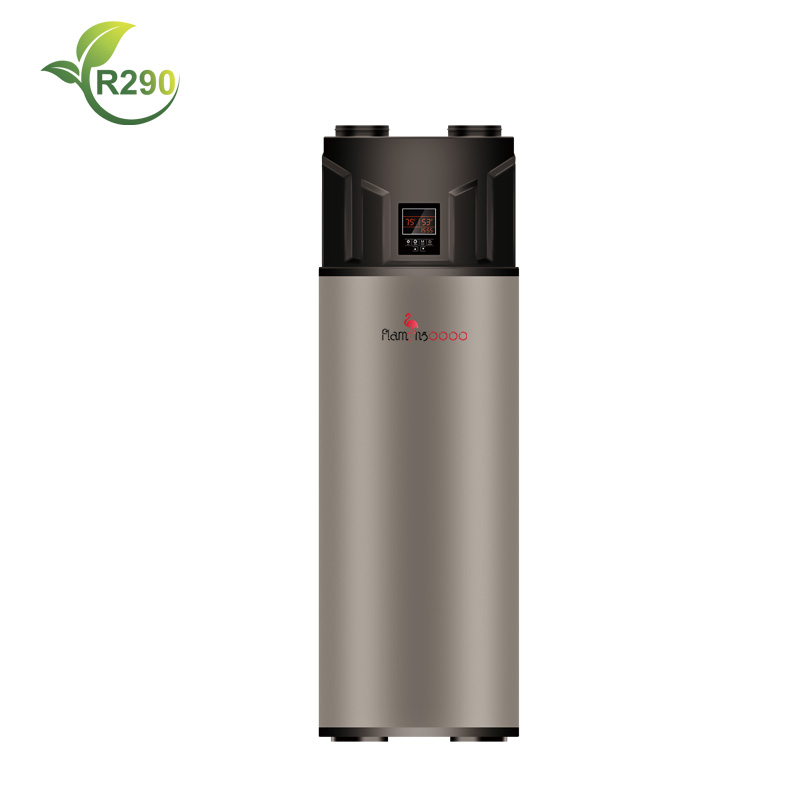Can Installing a Heat Pump Really Reduce Your Electric Bill?
As energy costs continue to rise and homeowners seek ways to cut expenses, the question of how to heat and cool a home efficiently is more pressing than ever. One solution gaining popularity is the heat pump—a versatile, energy-efficient system that promises to lower electric bills while keeping your home comfortable year-round. But can installing a heat pump really reduce your electric bill, or is it just another overhyped home improvement? In this in-depth article, we’ll explore how heat pumps work, their impact on energy costs, real-world savings, and key considerations to help you decide if a heat pump is the right choice for your home.
What Is a Heat Pump and How Does It Work?
A heat pump is a climate control system that provides both heating and cooling by transferring heat from one place to another. Unlike traditional systems that generate heat by burning fuel or using electric resistance, heat pumps move heat from the outside air, ground, or water into your home (for heating) or out of your home (for cooling). This process makes them highly efficient, which is the foundation of their cost-saving potential.
The Mechanics of Heat Pumps
Heat pumps operate using a refrigeration cycle involving four key components:
Evaporator: Absorbs heat from an external source (air, ground, or water), causing the refrigerant to evaporate into a gas.
Compressor: Compresses the refrigerant gas, raising its temperature.
Condenser: Releases the heat into your home (in heating mode) or outside (in cooling mode) as the refrigerant condenses back into a liquid.
Expansion Valve: Reduces the refrigerant’s pressure, cooling it down to restart the cycle.
This cycle allows heat pumps to deliver heating or cooling with minimal energy input, as they primarily use electricity to power the compressor and fans rather than to generate heat directly.
Types of Heat Pumps
There are several types of heat pumps, each with unique benefits:
Air-Source Heat Pumps: These extract heat from the outdoor air and are the most common and affordable option. They work well in moderate to cold climates.
Ground-Source (Geothermal) Heat Pumps: These use the stable temperature of the ground or water, offering superior efficiency but higher installation costs.
Ductless Mini-Split Heat Pumps: Ideal for homes without ductwork, these systems provide zoned heating and cooling for targeted comfort.
Water-Source Heat Pumps: Less common, these draw heat from a nearby water source, such as a lake or well.
Each type has the potential to reduce electric bills, but the extent of savings depends on your home, climate, and usage patterns.

How Heat Pumps Reduce Electric Bills
The primary reason heat pumps can lower your electric bill is their exceptional energy efficiency. Let’s break down the factors that contribute to these savings.
Superior Energy Efficiency
Heat pumps are measured by their Coefficient of Performance (COP) for heating and Seasonal Energy Efficiency Ratio (SEER) for cooling. A COP of 3, for example, means the heat pump delivers three units of heat for every unit of electricity consumed. In contrast, electric resistance heaters (common in traditional systems) have a COP of 1, meaning they use one unit of electricity to produce one unit of heat. High-efficiency heat pumps can achieve COPs of 3–5 and SEER ratings of 15–22, making them significantly more efficient than traditional air conditioners (SEER 13–20) paired with electric or gas heaters.
In winter, heat pumps extract heat from the outside air or ground, even at low temperatures, reducing the electricity needed for heating. In summer, they operate like air conditioners but often with higher efficiency due to advanced technologies like variable-speed compressors.
Year-Round Savings
Unlike traditional systems that require separate heating and cooling units, heat pumps handle both functions with a single system. This eliminates the need for a power-hungry furnace or electric heater in winter, leading to consistent savings throughout the year. According to the U.S. Department of Energy, homeowners can save 30–50% on heating costs by switching from electric resistance heating to a heat pump. In cooling mode, high-SEER heat pumps can reduce electricity use by 20–40% compared to older air conditioners.
Reduced Peak Demand Charges
In some regions, utility companies charge higher rates during peak demand periods, such as cold winter mornings or hot summer afternoons. Heat pumps’ efficiency reduces overall electricity consumption, lowering your exposure to these costly peak rates.
Integration with Smart Technology
Many modern heat pumps are compatible with smart thermostats, which optimize heating and cooling schedules based on your habits. By reducing unnecessary operation, smart thermostats can further lower your electric bill. Zoned systems, like ductless mini-splits, allow you to heat or cool only occupied areas, avoiding wasted energy in unused rooms.
Industry Data
The U.S. Energy Information Administration reports that homes with heat pumps use 20–50% less electricity for heating than those with electric furnaces.
A 2023 study by the International Energy Agency found that heat pumps can reduce household energy costs by 25–60% in moderate climates and 15–40% in cold climates compared to traditional systems.
In Europe, where heat pumps are widely adopted, households with air-source heat pumps save an average of €500–€1,000 annually on energy bills, depending on home size and insulation.
These examples highlight that savings vary based on factors like climate, home size, insulation, and the efficiency of the previous system. However, heat pumps consistently outperform traditional systems in energy cost reduction.
Factors That Influence Savings
While heat pumps have significant cost-saving potential, the actual reduction in your electric bill depends on several factors.
1. Climate
In moderate climates (e.g., the Pacific Northwest or Southeast U.S.), heat pumps operate at peak efficiency, maximizing savings. In extremely cold climates (e.g., northern Canada or Scandinavia), air-source heat pumps may rely on backup electric resistance heating during sub-zero temperatures, slightly reducing savings. Geothermal heat pumps, however, maintain high efficiency regardless of outdoor temperature.
2. Home Insulation and Size
Well-insulated homes retain heat better, allowing the heat pump to operate more efficiently. Larger homes require bigger systems, which may increase upfront costs but still offer proportional savings compared to less efficient systems. A professional load calculation ensures the heat pump is sized correctly, avoiding energy waste.
3. Previous Heating and Cooling System
The savings are most significant when replacing inefficient systems, such as electric resistance heaters (COP 1) or old air conditioners (SEER 8–10). If your current system is already high-efficiency (e.g., a 16-SEER AC paired with a 95% efficient gas furnace), the savings may be less dramatic but still noticeable.
4. Electricity Rates
The cost of electricity in your area affects savings. In regions with high electricity rates (e.g., California or New York), the efficiency of heat pumps can lead to substantial savings. In areas with low electricity rates but high natural gas or oil prices, heat pumps are particularly cost-effective compared to fossil fuel-based systems.
5. Installation Quality
Proper installation is critical for maximizing efficiency. A poorly installed heat pump may cycle on and off excessively, reducing savings. Working with a qualified HVAC contractor ensures optimal performance.
Additional Cost-Saving Benefits
Beyond direct energy savings, heat pumps offer other financial advantages that contribute to lower electric bills and overall costs.
Government Incentives and Rebates
Many governments incentivize heat pump adoption to promote energy efficiency and reduce carbon emissions. In the U.S., the Inflation Reduction Act offers tax credits of up to $2,000 for air-source heat pumps and $8,000 for geothermal systems. Some states and utilities provide additional rebates, reducing upfront costs by $500–$5,000. Similar programs exist in Canada, the EU, and Australia, making heat pumps more affordable.
Lower Maintenance Costs
Heat pumps require less maintenance than traditional systems with separate heating and cooling units. For example, gas furnaces need regular burner inspections and chimney cleaning, while heat pumps only require filter changes and annual checkups. This reduces long-term maintenance expenses, indirectly lowering your overall costs.
Increased Home Value
Energy-efficient upgrades like heat pumps can increase your home’s resale value. A 2024 study by the National Association of Realtors found that homes with high-efficiency HVAC systems, including heat pumps, sold for 3–5% more than comparable homes with older systems.
Elimination of Fuel Costs
Unlike gas or oil furnaces, heat pumps run entirely on electricity, eliminating the need for fuel deliveries or price fluctuations in fossil fuel markets. This provides cost predictability, especially in regions with volatile gas or oil prices.
Addressing Common Concerns
Despite their benefits, some homeowners hesitate to install heat pumps due to concerns about cost, performance, or suitability. Let’s address these:
1. Upfront Cost
Heat pumps have a higher initial cost than traditional air conditioners or electric heaters. Air-source heat pumps typically cost $4,000–$8,000 to install, while geothermal systems can range from $10,000 to $20,000. However, incentives, financing options, and long-term savings often offset this expense. For example, a $6,000 air-source heat pump that saves $500 annually pays for itself in 12 years, and its 15–20-year lifespan ensures additional savings.
2. Performance in Cold Climates
Older heat pumps struggled in sub-zero temperatures, but modern air-source models with inverter technology and low-temperature refrigerants perform efficiently down to -15°F (-26°C) or lower. Geothermal and water-source heat pumps are even less affected by cold weather. For extreme climates, hybrid systems (pairing a heat pump with a backup furnace) ensure reliability without sacrificing efficiency.
3. Installation Challenges
Air-source and ductless heat pumps are relatively easy to install, especially in homes with existing ductwork or those suited for mini-splits. Geothermal systems require significant excavation, which can be costly and disruptive. Choosing the right type for your home and working with an experienced contractor minimizes installation challenges.
4. Electricity Dependence
Since heat pumps run on electricity, some worry about reliance on the grid, especially during outages. However, their efficiency reduces overall consumption, and pairing a heat pump with a backup generator or solar panels can mitigate this concern. Additionally, as grids incorporate more renewable energy, heat pumps become even more sustainable.
Tips for Maximizing Heat Pump Savings
To ensure your heat pump delivers the maximum reduction in your electric bill, follow these best practices:
Choose a High-Efficiency Model: Look for a heat pump with a high SEER (15 or above) and HSPF (8 or above) for optimal performance. Energy Star-certified models often qualify for rebates.
Improve Home Insulation: Seal air leaks, add insulation, and upgrade windows to reduce heat loss, allowing your heat pump to operate more efficiently.
Use a Smart Thermostat: Program your heat pump to run only when needed, or use a smart thermostat to adjust temperatures based on occupancy.
Maintain Regularly: Clean or replace filters every 1–3 months and schedule annual professional maintenance to keep the system running efficiently.
Consider Zoned Systems: Ductless mini-splits allow you to heat or cool specific areas, reducing energy waste in unused rooms.
Leverage Incentives: Research federal, state, and utility incentives to lower installation costs.
The Future of Heat Pumps and Energy Savings
Heat pumps are at the forefront of the global push for energy efficiency and sustainability. Governments are promoting their adoption through incentives and regulations, such as the EU’s goal to install 10 million heat pumps by 2027 and Canada’s Greener Homes Grant program. Technological advancements, like improved refrigerants and smart controls, are making heat pumps even more efficient and affordable.
As electricity grids shift toward renewable sources like wind and solar, heat pumps will become even more cost-effective and environmentally friendly. Homeowners who invest in heat pumps now are not only reducing their electric bills but also future-proofing their homes for a low-carbon future.
Conclusion: A Smart Investment for Lower Bills
The evidence is clear: installing a heat pump can significantly reduce your electric bill, especially if you’re replacing an inefficient heating system or older air conditioner. With energy savings of 20–50% or more, potential rebates, and long-term durability, heat pumps are a smart investment for most homeowners. While upfront costs and climate considerations may influence your decision, the combination of lower bills, environmental benefits, and increased home value makes heat pumps an attractive option.
Ready to cut your electric bill with a heat pump? Contact a local HVAC professional to assess your home’s needs and explore available incentives. Visit our website for more resources on heat pumps and energy-saving solutions to keep your home comfortable and your wallet happy.










